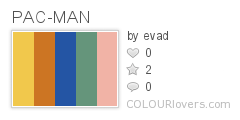I came across a lovely little ‘Atari Game Manuals‘ flickr set from Joe Kral the other day and thought it would be a perfect addition to the wonderful collection of nostalgia inducing color palettes.
While technology may have limited the color palettes of some of the first, and most popular, video games, their colors are no less influential on modern game design and culture as a whole, and an important part to any design is its packaging. The game manual art on many Atari games may have been a bit exaggerated and deceiving leaving the gamer wishing the game looked more like the picture on the box, but are nonetheless full of classic color palettes.


|

|


|

|


|

|


|

|


|

|


|

|


|

|


|

|


|

|


|

|


|

|


|

|

About Atari
Atari Inc. was a video game and computer company founded in 1972 by Nolan Bushnell and Ted Dabney. Primarily responsible for the formation of the video arcade and modern video game industries, the company was closed and its assets split in 1984 as a direct result of the North American video game crash of 1983.
The Atari 2600, released in October 1977, is the video game console credited with popularizing the use of microprocessor based hardware and cartridges containing game code, instead of having non-microprocessor dedicated hardware with all games built in. The first game console to use this format was the Fairchild Channel F. However, it was the Atari 2600 that made the plug-in concept popular among the game-playing public.
The Atari 5200 SuperSystem, or simply the Atari 5200, is a video game console that was introduced in 1982 by Atari Inc. as a replacement for the famous Atari 2600. The 5200 was created to compete with the Intellivision, but wound up more directly competing with the ColecoVision shortly after its release. A number of design flaws had a serious impact on usability, and the system is generally considered to have performed poorly on the market.
Most game descriptions from Atari Age
Header image by Jason Santa Maria
All other images © Joe Kral

